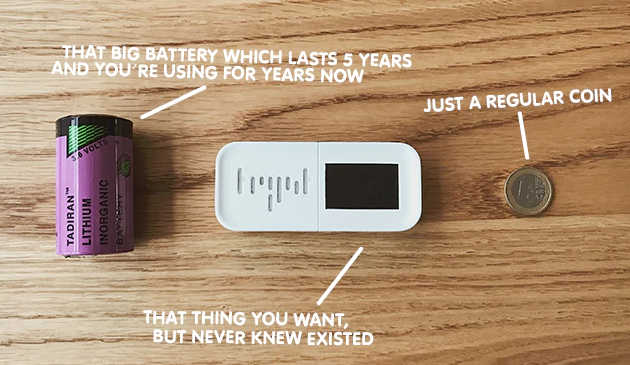| Making Light Work Of The IoT |
| Written by Harry Fairhead |
| Wednesday, 29 March 2017 |
|
The IoT has a problem. No not security, although that is a problem. The big problem is the need for batteries. Now Tryst Energy a company based in the Netherlands has a proposed solution - light power - and has a Kickstarter to make it a reality. Many IoT devices are hardwired inside bigger equipment that has to be mains powered. In this case there is no problem getting the power to the new device. But what about IoT devices that are standalone? A network of sensors, for example, ideally has to be placed without needing wired connections to anything. We can do away with the wires for communication by using WiFi or Bluetooth, but power is more of a problem.
The usual solution is to use batteries, but these run down and the regular chore of having to replace them is expensive and wasteful. What are we going to do with all the dead batteries the IoT is going to create in the next few years? Batteries may be a way of getting rid of the power cable but they aren't a perfect solution. There are various attempts at providing wireless power, including harvesting radio and mechanical energy from the surroundings, but these provide very little power. A better option is solar, but this can be complicated with the need for a battery that is charged from a solar panel that has to be placed in the sunshine. What Tryst Energy has done is to follow this basic idea and refine it. Take a small, very efficient, solar cell and couple it with a super capacitor and a low current consuming IoT device. Take a look at the Kickstarter video:
Sounds good but can it actually provide the power? The figures given suggest it is workable without needing direct sunlight. That is, it can work in an office or, as the company puts, it under a desk. The cell generates 200 microamps with 200 lux, which isn't much light, and 20mA with daylight. The super capacitor can store 1.7mWh and is claimed to last more than 68 years of charging and discharging. That's not a lot of power, but the company claims that 4 hours of 200 lux will power the device for 24 hours. A rough calculation reveals that the device uses around 70 micro watts per hour, which is very, very low. To achieve this it uses either Low Energy BlueTooth or LoRaWAN, which pulses its radio on and off to achieve low power and long range. You can pick which radio you want. In adition it has two processors - an Arduino-compatible Atmel and a low-power Cortex M4. Even so this is still a very low power target. This is all available on a KickStarter. You can opt for a 59 Euro basic: unit: for 69 Euros you can have one with movement detectors - accelerometer etc; or pledge 74 Euros for one with environment sensors - temperature, humidity, air pressure and air quality. These are very reasonable prices for a device with these capabilities and if it works it could make sensor networks much easier to put together. At the moment the Kickstarter is only at 10,680 Euros of a 30,000 goal and with 10 days to go it might well not make its target. The company says that this won't stop the final production, only the early availability of the Kickstarter units.
More InformationLight Energy IoT-modules without batteries on Kickstarter Related ArticlesPower Over WiFi - Really Wireless Intel Launches Curie-Based Arduino 101
To be informed about new articles on I Programmer, sign up for our weekly newsletter, subscribe to the RSS feed and follow us on Twitter, Facebook or Linkedin.
Comments
or email your comment to: comments@i-programmer.info
|
| Last Updated ( Wednesday, 29 March 2017 ) |




